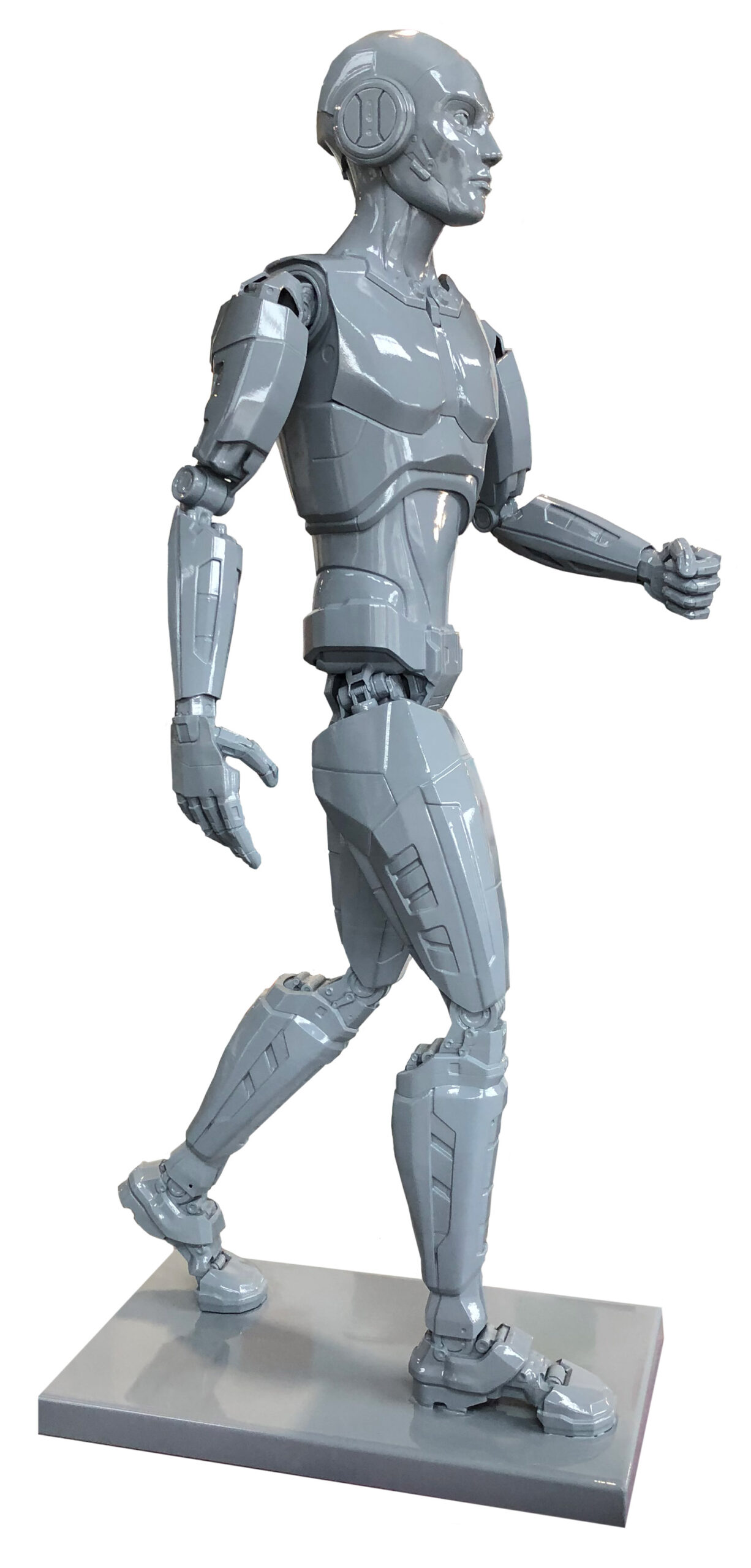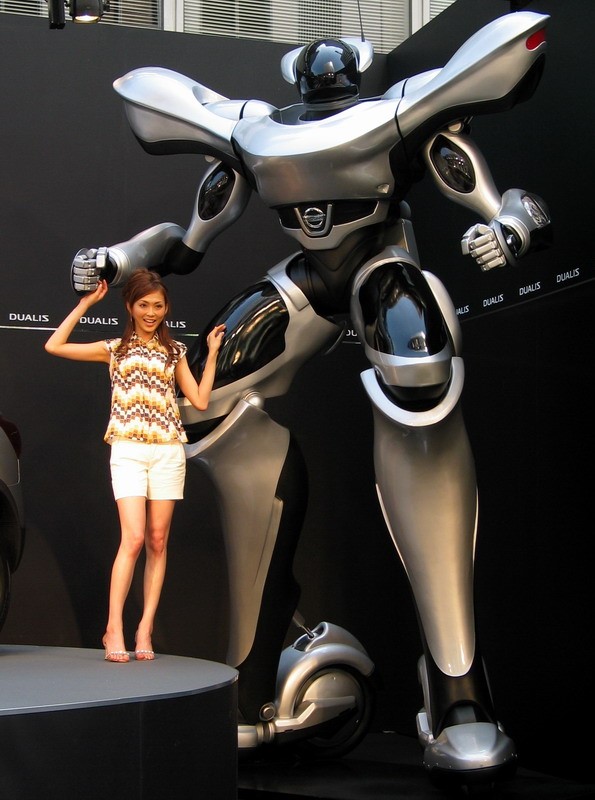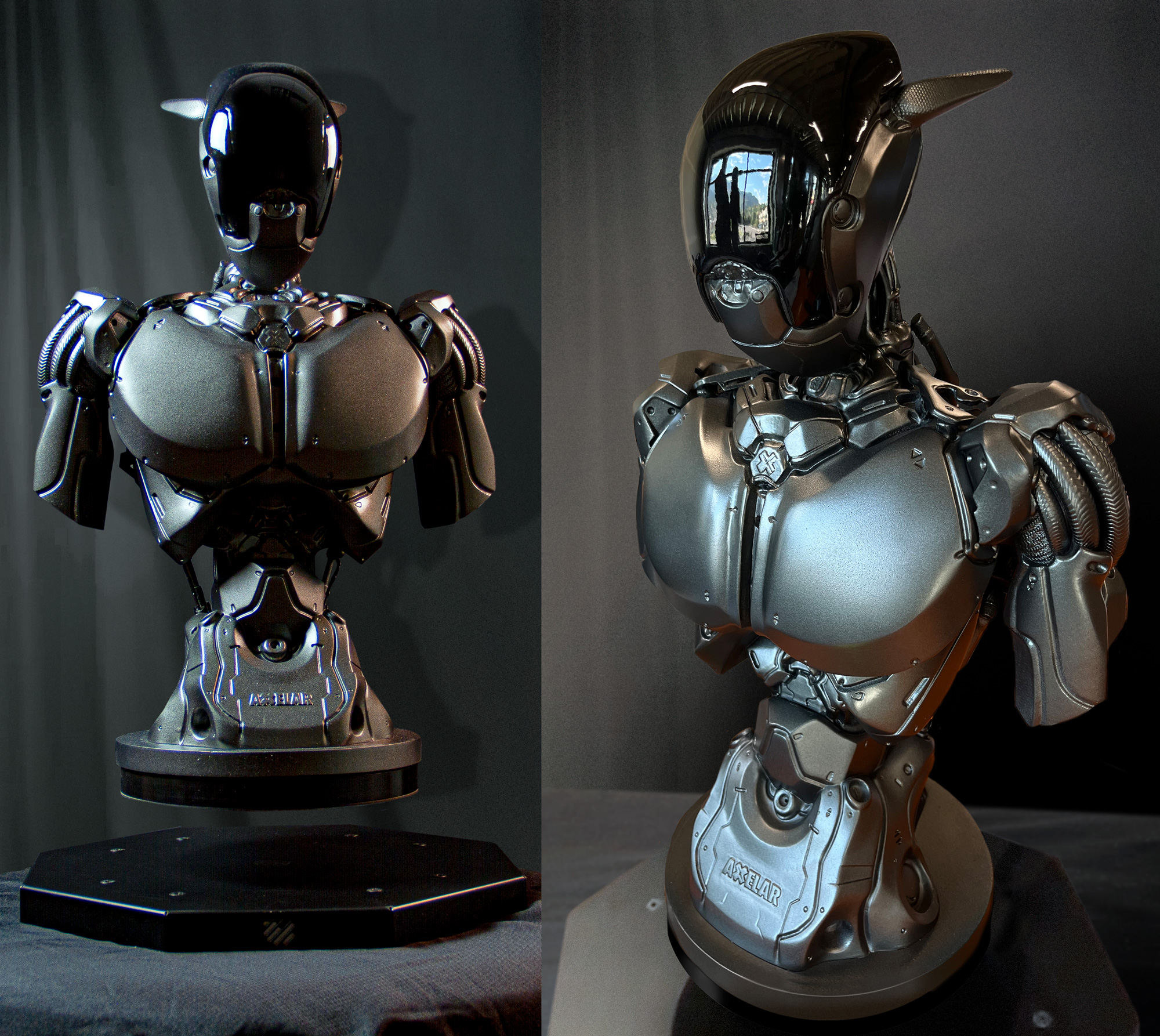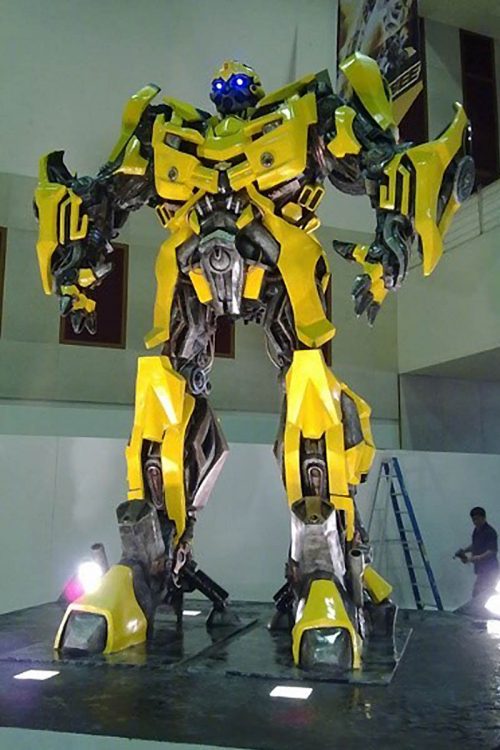Robot Statue
Robot Statue
We Build Custom 3D Statues
The Rise of the Robot Statue: Merging Art, Technology, and Culture
In recent years, the robot statue has emerged as a significant cultural icon, symbolizing the intersection of art, technology, and society’s collective fascination with the future. Whether installed in public squares or showcased in modern art museums, these statues have become visual representations of our aspirations, fears, and the evolving relationship between humanity and artificial intelligence. But what exactly makes robot statues so compelling? Why do we find these mechanized monuments worthy of attention, and how do they reflect our modern ethos? Let’s dive deeper into the rise of robot statues and their profound impact on the world.

A New Face of Public Art: Robots as Cultural Symbols
Public art has always been a reflection of the time and culture in which it is created. Ancient civilizations erected statues of gods, kings, and mythological creatures to signify power, divine protection, or human achievement. The modern world, however, finds its new symbols in technology. Robot statues are not just artistic representations of mechanical beings; they are emblems of humanity’s relationship with its own creations. These statues stand as a testament to our technological prowess and the societal conversation surrounding artificial intelligence and robotics.
At their core, robot statues serve as more than just visually striking pieces. They embody our ambitions toward creating intelligent machines and mirror the duality of excitement and anxiety that this pursuit engenders. For some, these statues are optimistic symbols of progress, suggesting a future where humans and robots collaborate to solve the world’s problems. For others, they represent a dystopian future where machines overpower their creators, harking back to science fiction narratives like Terminator or I, Robot. It’s this very ambiguity that makes robot statues culturally resonant—allowing different audiences to interpret them in their own way.
Take, for example, the famed robot statue in Tokyo, Japan—a towering 19-meter representation of the RX-0 Unicorn Gundam. This massive statue has become a pop culture icon, attracting tourists and fans from around the world. On the one hand, it pays homage to the country’s deep connection with anime and science fiction. On the other hand, it stands as a literal embodiment of Japan’s commitment to technological innovation, from robotics to advanced AI. It’s not just a tribute to a fictional universe; it’s a symbol of technological optimism.
The Historical Roots: Science Fiction as Sculpture
While the robot statue feels like a distinctly modern phenomenon, its origins are rooted in much older artistic and cultural movements. The first conceptualizations of robots in sculpture form appeared in the early 20th century, spurred by industrialization and the birth of science fiction as a genre. Literary works like Karel Čapek’s play R.U.R. (Rossum’s Universal Robots) and Mary Shelley’s Frankenstein presented early visions of artificial life, which soon inspired visual artists to explore similar themes in their work.
The early 20th century also saw the rise of modernist and avant-garde art movements that embraced technological themes. Artists like Marcel Duchamp and the Italian Futurists used mechanical forms in their sculptures to reflect the rapidly evolving industrial world. However, it wasn’t until the post-war era, when robotics began to make real technological strides, that the idea of robot sculptures truly took off.
In the 1960s and 1970s, the space race and the advent of computers led to an explosion of interest in robots. Science fiction movies like Metropolis and Star Wars brought robotic characters into the mainstream imagination, further inspiring artists to create sculptures that echoed these fantastical machines. During this period, robot statues started appearing as large-scale public installations, blending futurism with the emerging interest in technology-driven societies.
Blurring the Lines: Art and Technology as Co-Creators
One of the most exciting aspects of robot statues today is the way they blur the boundaries between art and technology. Modern sculptors aren’t just using traditional materials like metal or stone to create robotic figures; they are often integrating advanced technologies like robotics, artificial intelligence, and interactive sensors into the sculptures themselves. This creates a dynamic interaction between the viewer and the art, where the statue is not just a static object but an interactive experience.
Consider the works of artist Gijs van Bon, whose kinetic sculptures incorporate robotic mechanisms that allow the sculptures to move and react to their environment. His works are not only visually striking but challenge the traditional notion of what sculpture can be. These robot statues bring to life the very essence of what they represent—machines that are autonomous, intelligent, and responsive to their surroundings.
In this way, robot statues serve as both artistic objects and technological demonstrations. They embody the concept of the robot not just as an aesthetic form, but as a functional, interactive entity. This fusion of art and technology mirrors larger trends in contemporary culture, where the lines between the digital and physical worlds are increasingly blurred. The result is a new kind of public art that engages viewers on multiple levels—intellectually, emotionally, and technologically.

The Role of Robotics and AI in Modern Sculpture
As technology advances, so does the sophistication of robot statues. With developments in AI, robotics, and machine learning, artists are now able to imbue their creations with a level of autonomy that was previously the stuff of science fiction. These statues can move, react, and even learn from their environment, transforming the traditional concept of sculpture into something far more dynamic and alive.
Take, for instance, the work of artist Ken Rinaldo, whose interactive robotic sculptures explore the boundaries between human and machine. His “Autopoiesis” installation, for example, is a network of robots that communicate with one another and respond to the presence of viewers. These sculptures are not merely passive objects but active participants in the space, creating an immersive experience that challenges viewers to rethink their relationship with technology.
Rinaldo’s work exemplifies a growing trend in the world of robot statues: the integration of AI to create pieces that are not only reactive but also adaptive. These statues can change their behavior based on stimuli, learning and evolving much like living organisms. This presents a fascinating paradox—sculptures, which have traditionally been seen as static and unchanging, are now becoming dynamic and fluid, thanks to the very technology they depict.
Global Impact: Robot Statues Around the World
While Japan and the U.S. may be leading the charge in terms of robot statue installations, the phenomenon has spread worldwide. In China, robot sculptures are often used as symbols of national innovation, reflecting the country’s rapid advancements in AI and robotics. In cities like Shenzhen, which is a hub for tech and innovation, robot statues have become prominent features of public spaces, reflecting the country’s embrace of the future.
In Europe, robot statues are often seen as a commentary on the complex relationship between humans and technology. For example, a famous robot statue in Prague stands as a nod to Karel Čapek, the Czech author who first coined the term “robot” in his 1920 play R.U.R. The statue serves as a reminder of the country’s cultural legacy in the field of robotics, while also provoking thought about the ethical implications of AI.
Even in smaller cities and towns, robot statues are popping up as a reflection of local technological pride. These sculptures serve as markers of innovation and forward-thinking, encouraging people to engage with the idea of robots not just as distant, sci-fi creations, but as integral parts of our daily lives.
The Symbolism Behind the Design: What Robot Statues Represent
Robot statues carry powerful symbolism, both in their design and in their intent. In many cases, the robotic form is used as a metaphor for human evolution—our ability to create, adapt, and potentially surpass our natural limitations. The mechanical body of a robot often symbolizes efficiency, precision, and power—qualities that humans aspire to but cannot fully achieve on their own. At the same time, the robot form also represents a potential loss of control, as machines grow more autonomous and capable.
In some cases, robot statues are deliberately designed to appear humanoid, emphasizing the increasingly blurred line between human and machine. These statues often provoke deep questions about identity, consciousness, and what it means to be human in a world where robots are becoming more lifelike. They challenge us to consider the ethical and philosophical implications of creating beings in our own image.
On the other hand, some robot statues embrace a more abstract or mechanical aesthetic, emphasizing the otherness of robots and their distinct role in society. These statues can serve as cautionary symbols, reminding viewers of the potential dangers of unchecked technological advancement. By presenting robots as cold, impersonal machines, these statues provoke reflection on the potential loss of human empathy and connection in a tech-driven world.

The Future of Robot Statues: What’s Next?
As technology continues to evolve at a rapid pace, the future of robot statues looks incredibly promising. With advancements in AI, robotics, and materials science, artists will be able to push the boundaries of what is possible in sculpture, creating increasingly sophisticated and interactive works. Imagine a robot statue that not only moves and reacts but can also hold conversations, learn from its surroundings, and evolve over time. These sculptures could become living, breathing entities in public spaces, blurring the line between art, technology, and life itself.
In addition, as robots become more integrated into our daily lives—whether through service robots, AI assistants, or even robotic pets—robot statues will likely become even more common. These statues will not only serve as artistic representations of technology but as symbols of the new social contract we are forming with machines.
At the same time, the rise of robot statues will continue to provoke important discussions about ethics, autonomy, and the role of technology in society. These statues may serve as reminders of the potential pitfalls of our technological ambitions, or they may stand as hopeful symbols of a future where humans and machines work together for the greater good.
Conclusion: The Legacy of Robot Statues
Robot statues are more than just artistic creations—they are reflections of our deepest hopes and fears about the future of technology. They serve as both celebrations of human innovation and cautionary symbols of the potential consequences of our creations. As these statues continue to pop up in cities and public spaces around the world, they challenge us to think critically about the evolving relationship between humans and machines, and the role that technology will play in shaping the future of our society.
The legacy of robot statues will not only be in their artistic value but in the conversations they provoke. They will stand as lasting monuments to a pivotal moment in human history, where the boundaries between man and machine, art and technology, began to blur. In a world increasingly dominated by AI and robotics, these statues will remind us of the power, potential, and responsibility that comes with creating the future.
Checkout WhiteClouds’ 3D Statues to learn more information.
Contact us today to learn more about our 3D services and how we can help you achieve your goals.
